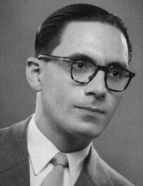

The history of techniques with “ Inovações técnicas no tempo de D. João V: o engenho do Pinhal do Rei ” [ Technical innovations in the time of King João V: the Pinhal do Rei mill ] . This article was published i n 1962, signalling the time of “ invention and progress ” in the 18 th century. Given that he was a lecturer, he had to take into account “ the cultural environment of the century, with Cartesian mechanism, the prestige of Newton ’ s physics, the rehabilitation of the mechanical arts, the growing importance of the utilitarian and practical ideal ” (p. 2) . In this environment and under the protection of D. João V, a windmill for sawing wood was set up in the Pinhal de Leiria. In 1723, Dutch architects or engineers and craftsmen came to set it up. Its administration was prepared – along with its staff – to get the mill up and running with good results. This entailed other issues, such as the transport of timber, particularly for shipbuilding. Accompanying this article is a set of developed scholarly notes that clarify many of the questions raised by this pioneering article.
Another article in the same collection on the history of techniques is based on the presence of a French shipbuilder in Portugal between 1710 and 1715. Because the navy needed to equip and renovate its warships, a man called Chabert had to be sent from France to Lisbon to build ships. He was relatively successful professionally but unlucky personally.
To get a good idea of LFA ’ s precise working methods, one must read the article he dedicates to the authenticity of the “Political Testament” of D. Luís de Cunha. It shows the thoroughness with which he analyses the ambassador ’ s writings, comparing them with other texts written by him, which allowed him to make a positive assessment from the outset, especially because of the references in the text that could not be attributed to others. Even the appointment of Sebastião José de Carvalho e Melo as Secretary of State is the result of favourable assessments of him and the diplomatic action that Luís da Cunha had taken elsewhere. Although it concludes that it is authentic, it has been poorly published , and the text was left unfinished.
This work is financed by national funds through FCT - Foundation for Science and Technology, I.P, in the scope of the projects UIDB/04311/2020 and UIDP/04311/2020.
